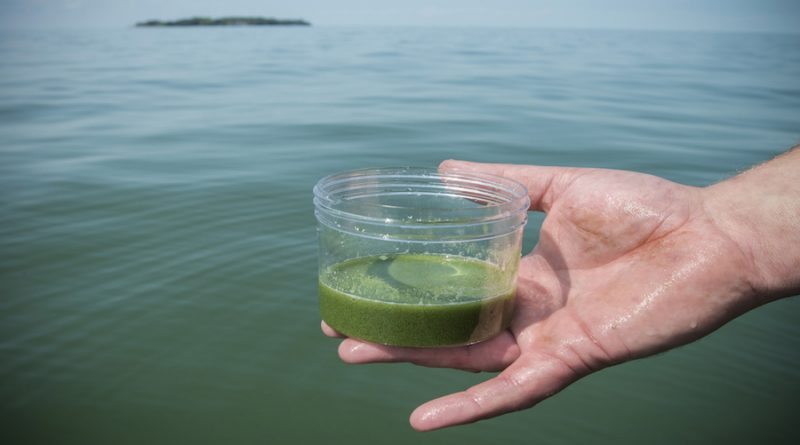This article by Joey Horan appeared in Belt Magazine, November 21, 2017.
In late September, temperatures in Northwest Ohio and Southeast Michigan eclipsed 90 degrees for six straight days. Perhaps those who lived further off the shores of Lake Erie worked their cognitive dissonance muscles enough to enjoy the extended summer, but there was no such pleasure for those living near the Western Lake Erie Basin.
Following the spate of high temps, algae did what algae do in warm, nutrient dense waters. They grew. More than 700 square miles of the western portion of Lake Erie turned a pea green, Toledo’s shoreline smelled like a sewer and its chlorine-treated tap water like a hotel hot tub.
Though the city’s drinking water advisory held steady on “clear,” Toledoans remained apprehensive. In an attempt to assuage fears, then-City Councilman Kurt Young went live on Facebook to record himself drinking straight from the tap. After a dramatic gulp, he looked straight to camera and said, “It’s clean, it’s safe.”
Such political sophistication cannot erase the memory of 2014, when, as a result of a harmful algal bloom (HAB) near the intake crib of Toledo’s Collins Water Treatment Plant, harmful levels of microcystin were detected in the drinking water. The levels were high enough to set off a two-and-a-half-day no-drink advisory for more than 400,000 people.
Furthermore, Young’s invoking of the benevolence of local government — “I want to keep you safe,” he said — fails to reckon with, or even respect, the environmental crisis threatening the people of the region.
The scientific, civic, political, and agricultural communities are in consensus on two things when it comes to the resurgence of HABs. One, the Western Lake Erie Basin has a phosphorus problem, and two, the agriculture industry is the biggest contributor of phosphorus to the lake. MORE…

